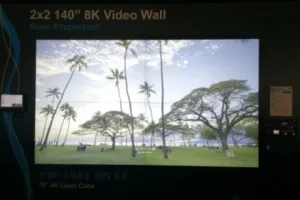Barco introduced the first RGB laser based rear projection cube in a 70” screen size. The technology was profiled in a presentation at Display Summit and demonstrated on the InfoComm show floor. (DS31 Barco Happy with RP Cubes for Control Rooms)
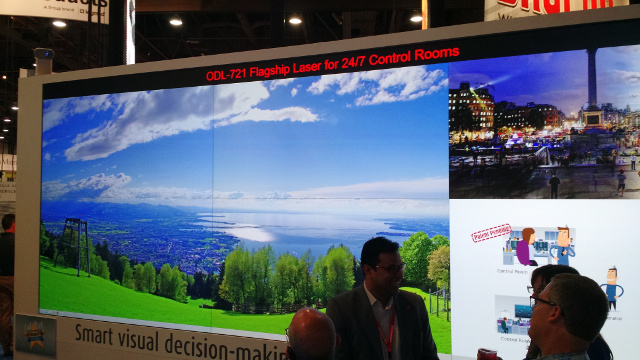
The Flagship laser series for 24/7 control rooms offers all the advantages of RGB laser projection for large video walls – including laser brightness levels and vibrant colors, with an unmatched lifetime and lowest total cost of ownership (TCO). This 10th generation video wall from Barco lifts rear-projection video walls to a whole new level for critical infrastructure control room markets, said the company.
One very big advantages of this new offering is the brightness level – twice that of comparable RGB LED models, which will allow operation of control room in much brighter environments – while maintaining good color purity and contrast.
The latest generation Barco Sense X automatic calibration technology is also integrated into this new generation of RGB laser video-walls. This system continuously measures brightness and color levels, and makes sure the video wall is perfectly calibrated at all times – not only inside the individual cubes, but over the entire video-wall.
The long lifetime of the RGB lasers means the cube can be operated in 24/7 for 11 years before falling to a 50% of initial luminance point (or 100K hours in eco mode). And, power consumption is 25% lower at high brightness levels than conventional LED-lit cubes.
In the Display Summit presentation, Lutz Nehrhoff von Holderberg gave a very nice strengths/weakness evaluation of rear-projection cubes using RGB LED, phosphor scanning (Prysm) laser phosphor and RGB laser. The results were summarized nicely in the chart below.
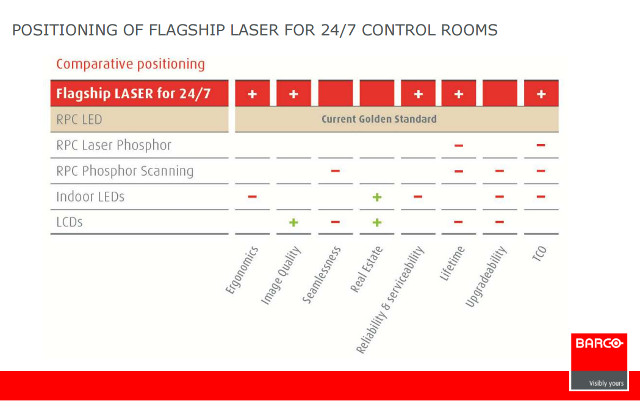
Holderberg said that the new RGB laser cube can display 170% of the Rec. 709 color gamut and has an efficiency of more than 10 lm/W. He makes a compelling case to move to a RGB laser solution, but there will be a price to pay – these cubes will be more expensive – although no pricing was offered.
Delta was showing its new laser-phosphor based rear-projection cube in a 2×2 set up. Each 70” cube offers 4K resolution so this produced an 8K image. This uses the new 4 million mirror 0.65” DLP chip set with an image shifting element to create a 4K resolution image. This is the first time we have seen this chip used in a cube and the first time a laser phosphor engine has been used in a cube, as far as we know. Delta said the engine can produce about 4000 lumens which can create a 500 cd/m² image on 50” to 70” cubes. In development are ways to made the cubes more narrow as well as enabling some interactive technology.
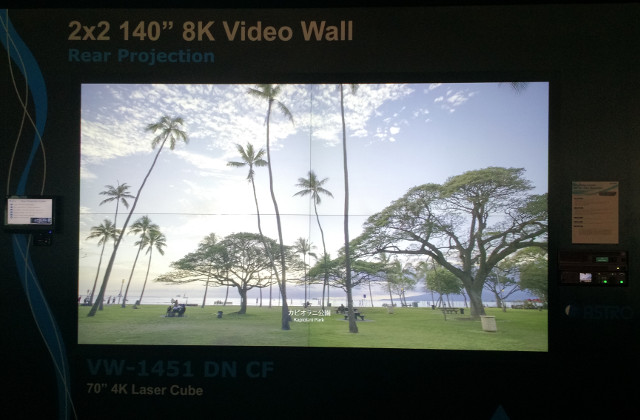
The major news from Mitsubishi Electric was not new cube products, but rather an improvement to them. The upgrade was the addition of a redundant power supply for the LED sources in the 1-chip DLP rear projection cubes (left box in photo). This was added as it is the power supply that fails more often than the LEDs, DLP chip or other components in the cube. As a result, the 24/7 operating time increased from 80K hours to 100K hours.

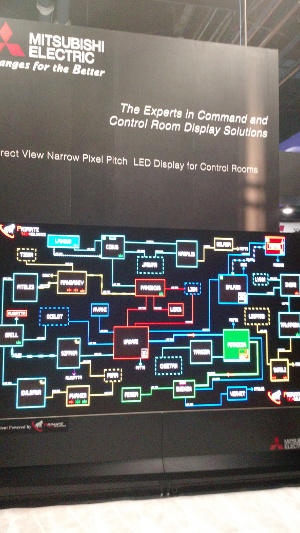 Mitsubishi offers a full range of rear projection cubes with HD or WUXGA resolution. Screen sizes include 50, 60, 62, 67, 70, 72 and 80 inches with the 4:3 aspect cubes offered at 57, 67 and 80 inches.
Mitsubishi offers a full range of rear projection cubes with HD or WUXGA resolution. Screen sizes include 50, 60, 62, 67, 70, 72 and 80 inches with the 4:3 aspect cubes offered at 57, 67 and 80 inches.
The company was also showing a fine pitch (1.5mm) LED wall for control room applications. This was definitely brighter with punchier colors than the cubes. These will use conventional 3-in-1 LED SMD components and will be designed for 24/7 operation typical of control rooms. While there are some image quality benefits, you can see pixels up close and you end up with less resolution for more money, so the company will see how customers react to this trade off. These will become available in 2017. – CC

